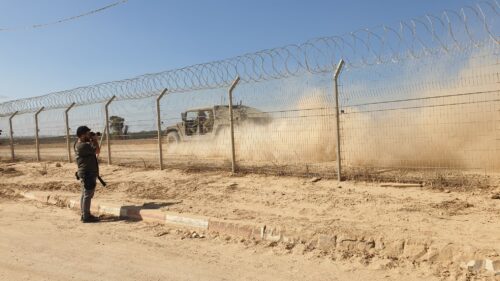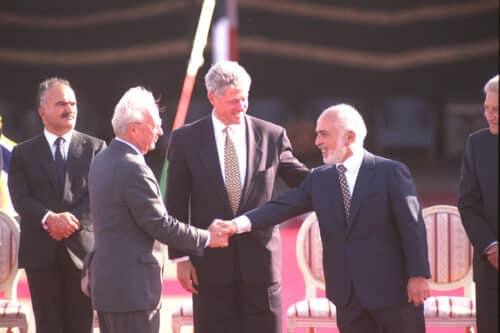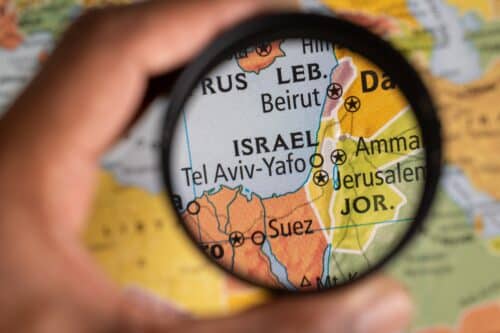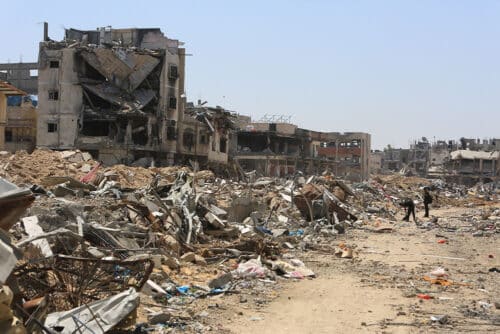In the previous chapter, Lieutenant Colonel (res.) Baruch Yedid reviewed the various causes for the decline of the Palestinian Authority, mostly related to the growing civil-social unrest on the Palestinian streets; the infighting in Fatah and the rise of Hamas, and the loss of the security control over wide sections of the PA’s territory. The recommended course of action for Israel was to maintain the Authority as a framework of governance alone, but not to act towards the reinforcement of its problem-riddles leadership, which is inflicted with incurable ailments and is committed to the struggle against Israel, inter alia by mean of irreversible diplomatic overtures.
In the current, and final, chapter of the series, we will review the emerging “Battalions” phenomena, uncontrollable Palestinian militant groups, as a parable of the PA’s loss of control over large sections of Judea and Samaria, which are supposed to be under its security control – particularly in important cities such as Jenin and Nablus. I will present the exclusive testimony of a Palestinian security forces officer, who attests to the plummeting moral and escalating disobedience among Palestinian police officers, which also leads to many of them joining the “Battalions” who are rebelling against their employer, the Palestinian Authority. Internal sources also attest to the growing status of the armed resistance group – “Lion’s Den”. In addition, Israel should be concerned about the increasing cooperation between Hamas, Islamic Jihad, and the Popular Front under the guidance of Hezbollah and the Iranian Revolutionary Guards, which might create a new and coordinated type of terrorist threat in Judea and Samaria, on the backdrop of a disintegrating Palestinian Authority.
The PA, which has incited against Israel and encouraged perpetrators of terror attacks from the outset, has adopted an “if you can’t beat them, join them” policy encouraging the Battalions in light of its incompetence to deal with these rebel militants. This policy makes some contribution in easing tensions between it and the challenging factions, and in closing ranks among Palestinians. One this policy’s main expressions is in the decision to halt security coordination with Israel following the IDF counterterrorism raid in Jenin which led to the killing of 9 terrorists. In the PA’s perspective, it is better off escalating tensions with Israel – which is interested in its stability and survival – than confronting terrorist factions that can threaten its integrity. This is a highly problematic development for Israel.
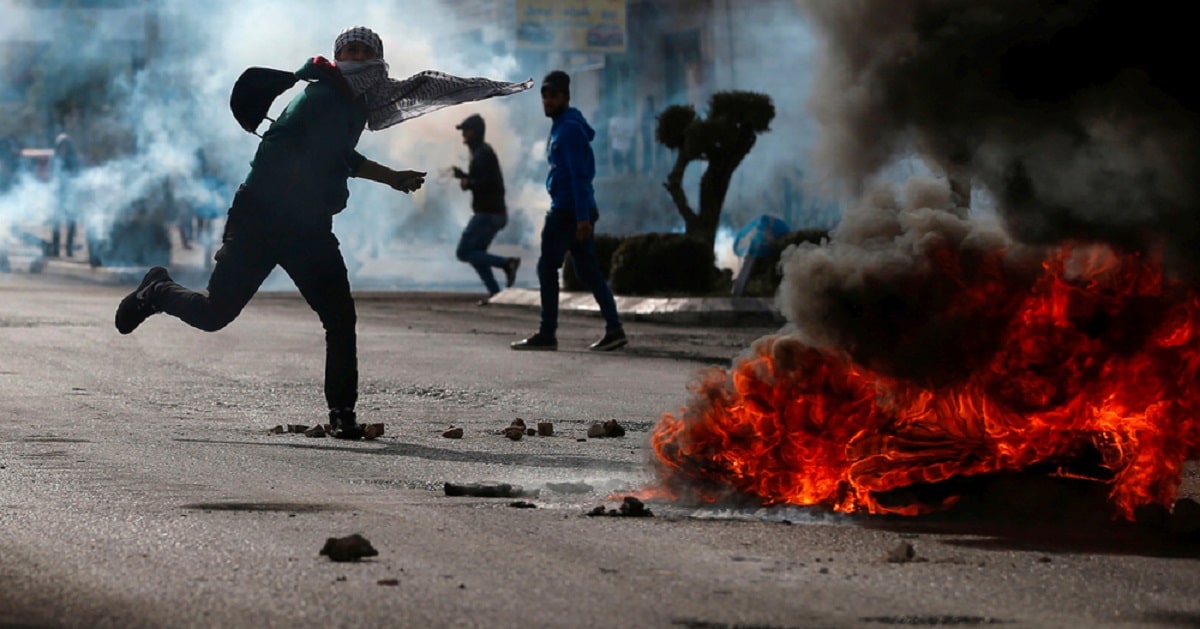
During the recent period, against the backdrop of the PA’s incompetence and inability to deal with the focal points of terrorism and violence in Samaria, a momentum is gathering which is posing a serious threat to the Palestinian Authority – the establishment of the “Battalions”: armed groups that are forming into actual militias, first germinating in Jenin (called the “Wasp Nest” battalion) and already reaching Nablus, where the “Lion’s Den” militant group has been formed. This process was set into motion when Mahmoud Abbas announced a large-scale operation in Jenin – a teeming center of resistance to the PA’s government – lasting only a day and a half and ending with the dismissal of the entire top command of the Palestinian security forces in the district.
Speaking about the situation on the ground, one officer in the Jenin Palestinian Preventive Security (PPS) service told us: “The situation in Jenin points to the loss of control, and especially to a complete disconnect between the reality on the ground and the statements made by senior Palestinian Authority officials who believe that they will be able to gain control of the territory, and those made by senior IDF officials, claiming that another operation would break the militants”. He adds: “The militants in Jenin are highly motivated and far from ready to surrender. Your military operations are not going in the direction you want.”
Now, the “Battalions” phenomenon in Samaria is accelerating and posing a real threat to a weak, bankrupt, corrupt PA, which is rife with infighting due to the succession struggles. Against this backdrop, it is important to mention the unrest in the universities against the PA, the growing social protests – especially since the killing of social activist Nizar Banat by Palestinian security officers in Hebron during an investigation – and, above all, the cancellation of the elections.
While Palestinian Islamic Jihad (PIJ) calls for “unity of the ranks” – as it dubbed the IDF’s Operation Breaking Dawn in the Gaza Strip in August 2022, the terrorist organizations in northern Samaria have already united into groups operating under the name “Jenin Battalions” or “Nablus Battalions” – violent umbrella associations shared by Fatah, Hamas, the PFLP, and Islamic Jihad (PIJ). At the same time, institutionalized organizations continue to promote terror attacks independetly, such as the planned PIJ terror attack whose thwarting led to the killing of 9 terrorists and serves as a pretext for the following terror attacks.
The close ties between Jihad, Hamas, and the PFLP with Hezbollah and the Iranian Revolutionary Guards should concern Israel, which may find itself facing Iranian “proxy” organizations in Samaria that unite a number of rival Palestinian factions for the purpose of the armed struggle against it.
The Nablus “Battalions” Declare Civil Mutiny and Grow Closer to Iran
Mahmoud al-Banna, a resident of Nablus, is currently in command of the “al-Aqsa Martyrs” group in the city. He is referred to by his comrades as “Hawk” (“Saqer”), a tribute to the violent “Fatah Hawks” group that operated under Fatah during the first intifada, and alongside the “Martyrs” in the second intifada.
Al-Banna’s partners are PFLP operative Muhammad Tabanja and senior Hamas figure Mus’ab Shtayyeh, who has been detained for months in the PA prison in Jericho. Both of them, along with Ibrahim Nabulsi, who was recently assassinated in Nablus (al-Banna had attended his funeral already as commander of the Nablus Battalions) were in contact with Bassam Sa’adi, a senior Islamic Jihad figure, who was arrested by Israel before Operation Breaking Dawn – an arrest that sparked a significant escalation between Israel and the Palestinians. When Sa’adi was arrested, the ISA – Shin Bet issued a statement according to which “Sa’adi was engaged in building a significant military force in Samaria”. A few weeks later, Hossein Salami, commander of the Iranian Revolutionary Guards, shed light on the affair, saying in interviews: “We are arming Samaria just as we armed the Gaza Strip”.
In fact, a few days before Sa’adi’s arrest, he was scheduled to meet with the three and was saved from an operation in which their terrorist squad comrades were eliminated. All these targets are at the top of Israel’s terrorist list and are considered targets for elimination, like their predecessors.
Convening with parallel resistance groups is nothing new: in the past, senior “al-Aqsa martyrs” figures had been convicted of ties to Hezbollah and sentenced to prison for the transgression.
Al Bana – “Hawk” – is living on borrowed time; A few months ago, when the Shin Bet coordinator in Nablus spoke with al-Banna and offered him to turn himself in before he was assassinated, al-Bana replied, “Come deal with me face to face” and refused the generous offer. The Shin Bet is putting heavy pressure on his family to turn him in, and as part of this effort, his brother, Muhammad, was arrested in a special units’ raid on the Halat al-Amud neighborhood in Nablus.
**
While al-Bana commands the “Al-Aqsa Martyrs”, Muhammad Tabanja, a released prisoner, heads “Abu Ali Mustafa Brigades” – the PFLP’s military wing, which already several years ago had joined forces with Hamas and Islamic Jihad in Gaza and became a very important element in the opposition against the Palestinian Authority. The front command squadis complemented by Hamas’ Masaab Shtayeh, who is also a released prisoner from the village of Salem, east of Nablus.
Shtayeh and his family have a long history of terrorism activity: he himself was wounded in the operation to assassinate Ibrahim Nabulsi; One of his relatives was formerly a close aide to Hamas engineer Yahya Ayash, who was killed with the remotely detonated phone smuggled into the Gaza Strip in 1996; His brother, Akaf, also a Hamas operative, was detained and sent to prison by Mahmoud Abbas’ Preventive Security service.
**
In Nablus, the terrorist activity is concentrated around Joseph’s Tomb, in an attempt to harm worshippers and IDF soldiers, and in the checkpoints around the city. Palestinian sources claim that the “Nablus Battalions” had begun operating a few months after the battalions have initiated operation in Jenin. Ibrahim Nabulsi and his squad mates were the ones who drew the inspiration from Jenin – from senior PIJ official Sa’adi – and translated it into an action in Jabal al-Nar, “the mountain of fire,” as Nablus is nicknamed.
It can be assumed that it was Sa’adi who was their “source of authority”, as described in the Shin Bet’s arrest announcement, and this is concurrent with assessments on part of Palestinian sources.
In September 2021, when six Palestinian prisoners escaped from Gilboa Prison, the unsurprising collaboration was already evident between the “Al-Aqsa Martyrs”, represented by Zakaria Zubeidi, and “Islamic Jihad”, which was represented by five of its members in the escape operation. This breakout rekindled the resistance movement in Jenin, a movement that is now migrating south to Nablus, and some would say to even to Ramallah.
The members of the “Battalions”, all with long beards, dressed in black baseball caps, military uniforms, and sporting white, black, green or red headbands (depending on the mother organization), mostly originate from the Nablus Kasbah (bazar), the neighborhoods of Al-Yasmina and Makhalat al-Amud, and from the refugee camps of Balata and Askar. In Jenin, they are mostly from the refugee camp, which during the second intifada became the symbol of resistance. These are all places where the “Oslo achievements”, which are noticeable on every street in Ramallah, are literally unfelt.
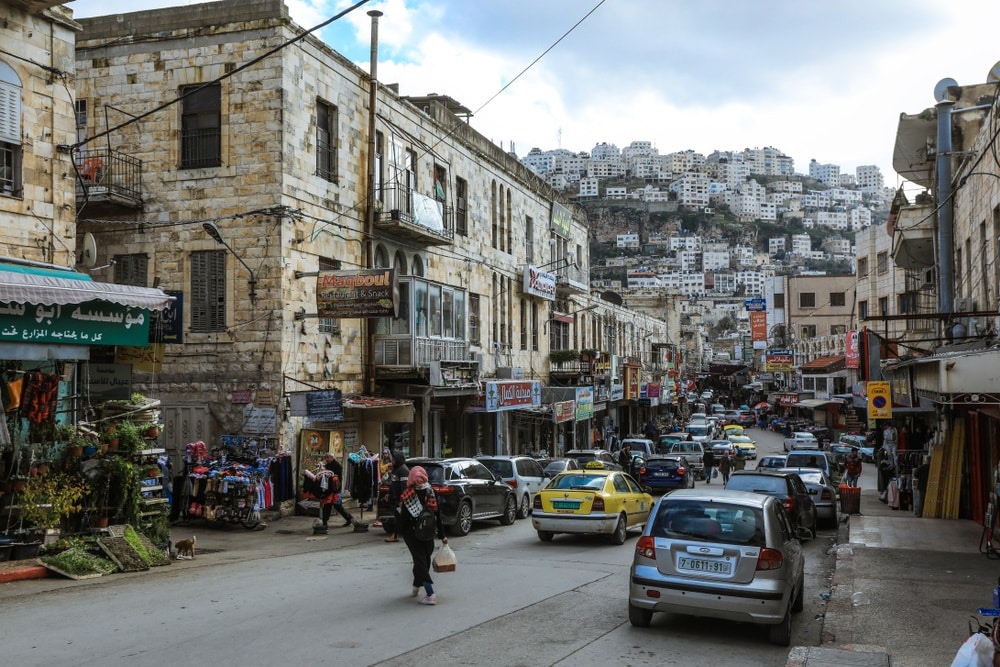
**
The Palestinian Authority is all but helpless in the face of the “Nablus Battalions”, which defy it and declare open military struggle against Israel. One phenomenon currently worrying Ramallah is the fact that many of the “Battalions” members are the sons or relatives of officers in the Palestinian Authority itself. The most prominent of these was Ra’ad Hazem, the perpetrator of the attack in Dizengoff, who was the son of a colonel in the Palestinian security forces, and Ala Nabulsi, the father of the assassinated commander of the “Martyrs”, and colonel-ranking officer in the Preventive Security and a released prisoner.
Yet this should come as no surprise, as many of the “Al-Aqsa Martyrs” – including members of the “Al-Asafa” and “Fatah Hawks” – were integrated into the Palestinian security apparatuses, while others, under the tutelage of senior Fatah figures who were spurned by Mahmoud Abbas and the PA leadership, continued to be members of semi-organized groups and waited for the opportune moment to take revenge on the PA. Palestinian sources estimate that the “Al-Aqsa Martyrs”, who in the past operated under the leadership of Fatah and the PA and enjoy high-level connections, are the leading force behind the “Battalions” in Nablus.
**
The members of the Nablus and Jenin “Battalions” are mostly young men between the ages of 19 and 30, who have long since disengaged from Fatah and are actively working against the crumbling PA. Against them, Mahmoud Abbas declared a “large-scale military operation” in Jenin, but the operation lasted barely two days and ended with the heads of Palestinian security admitting a scathing defeat and the entire top command of the security mechanism was axed by Mahmoud Abbas overnight.
The Kasbah in Nablus is one of the power strongholds of the ”Martyrs” – a place that already a few years ago had become an ex-territory for the Palestinian Authority, which preferred to steer clear of its neighborhoods. It is no coincidence that many of them also come from universities, which in recent months have become hotbeds of political unrest against the Palestinian Authority.
**
After the “Battalions” began to operate and claimed casualties in Israel, the IDF launched Operation Wave Breaker, in which many of the “Al-Aqsa Martyrs” commanders in Nablus were eliminated. The most prominent of these are Adham Mabruka, nicknamed “The Chechen”; Muhammad Dakhil; Ashraf Mabaslet; Bashar Azazi; Abed Rahman Sobh; Islam Sabah; Hussein Taha; Ibrahim Nabulsi and others. However, despite Israel’s military efforts, Nablus is once again at the spearpoint of terrorism, as it was on the eve of the first intifada and at the beginning of the second intifada, when the IDF considered the town the “capital of terrorism”.
In the Gaza Strip, the operatives of these groups have become an integral part of the terrorist organizations operating under Hamas and under the joint operations room, and it can be assumed that if the activities of the Battalions in northern Samaria expand as a united force of Jihad, Hamas and the PFLP, their operatives will become another “Iranian proxy” a stone’s throw from Jewish Afula or an hour’s drive from Tel Aviv.
The PA and the Battalions – A Fight for Control Over Samaria
Since the establishment of the Battalions, the PA has been waging a battle for survival in Samaria and is fighting for its future. Violent incidents that broke out in Nablus with the arrest of a Hamas operative – a member of one of the networks – escalated to become some of the most serious clashes between the Palestinian Authority and armed groups in Judea and Samaria since the PA was established almost 30 years ago.
Employing violence, the militants demanded the release of the Hamas member, and representatives from the city had begun to mediate between the militants and the PA. According to a Palestinian security official “All scenarios are on the table and we are even preparing for a contingency of street battles”. The Palestinian Authority understood that this was not just a test of governance, but a test of survival in the face of what appeared to be the development of violent civil uprising after the “Lion’s Den” declared civil disobedience. The implication of this was closed businesses, road blocks with burning tires, etc. The armed groups also threatened that any police officer who ventured outside while wearing a uniform might be attacked. Sources in Nablus reported that “police officers took off their uniforms, blended in with the demonstrators and participated themselves in the defacing of public property. Store owners have been ordered to close under duress…”
The PA grabbed and arrested in the city center a Hamas member Mus’ab Shtayyeh alongside another member of the armed group, Amid Tabileh for reasons of its own – the PA explained that Shtayyeh was detained for security reasons that “will soon be made clear”, but sources indicate that he was involved in purchasing weapons and recruiting operatives who were also designated for action against the PA itself.
The escalation in Nablus led a situation wherein, for the first time, the PA in its own territory, was forced to face on the one hand a coalition of armed groups on the ground, and on the other – a political opposition in the form of Hamas and PIJ.
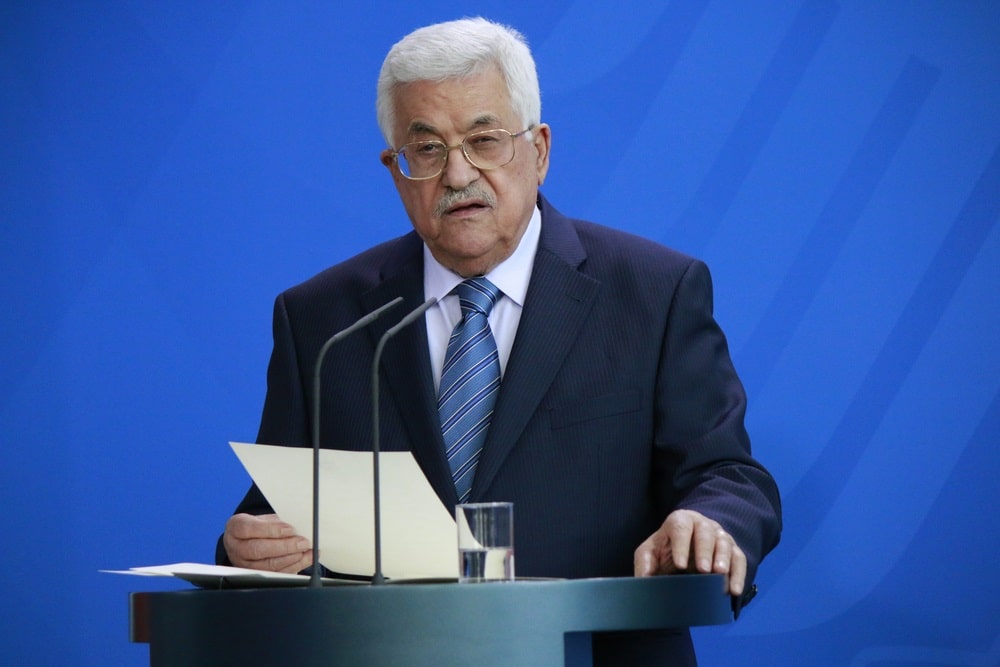
The PA’s Proposal to the Nablus Battalions
The PA became acutely aware of the threats to its very existence after it had lost control of Jenin. However, in Nablus it is still trying to curtail the armed groups, but with little success. As part of its efforts it offered the militants to lay down their arms and sell them to the PA in exchange for amnesty, a hefty financial compensation and an opportunity to join the ranks of its security forces. The militants on their part, rejected the offer out of hand. Referring to these events, a Palestinian security official said: “The Palestinian Authority is waking up very late”.
At a recent meeting with Mahmoud Abbas, several heads of the Palestinian security forces proposed purchasing the weapons of the armed groups in Nablus. A Palestinian source reports that the meeting was fraught by grave concern over the spillover of the organized armed groups into central and southern Judea and Samaria. During the meeting, Mahmoud Abbas demanded that the law be enforced and that political contacts with Israel be given another chance, however, some of the top command feel little faith in that regard and some even voiced their concerns that he would not be able to guarantee and secure the peace on the ground.
The heads of the Palestinian security establishment are still trying to isolate the armed groups, which have turned the Nablus Kasbah and the refugee camps into their strongholds. Palestinian Interior Minister Ziad Hab Rih, commented along those lines, saying that the PA was putting into gear a series of important moves in Nablus and Jenin.
Exclusive Testimony from the Heart of the “The Lion’s Den”
A former senior “al-Aqsa Martyrs” member, who collaborated with Hezbollah and spent many years in Israeli jails, and who is now very close to the Nablus “Lion’s Den”, reveals new details about the terrorist group that plagues Israel and the PA.
The senior official, a member of the “Martyrs” and a resident of Nablus who operated in early 2000 and was one of the generators of the armed intifada, has so far refused interviews to foreign media, demanding to remain anonymous. Here he provides a rare glimpse into the “Lion’s Den” group, which was formed after the assassination of Ibrahim al-Nabulsi, one of the heads of the “Al-Aqsa Martyrs’ Brigades”.
The operative says that the establishment of the “Lion’s Den” group was the birth of a new national revolutionary movement that had pulled the rug from under the feet of the Palestinian Authority and shattered the doctrine of American General Dayton, who sought to build a significant Palestinian military force to fight terrorism. General Keith Dayton served as the American security coordinator between Israel and the Palestinian Authority from 2005 to 2010, helping the PA build security apparatuses popularly known as the “Dayton Forces”, which form the backbone of Palestinian security coordination with Israel.
The operative says that the “Lion’s Den” members are establishing local headquarters in all the Palestinian cities with the aim of establishing themselves in every village and refugee camp and to become a new revolutionary national organization that operates with great force while opposing the PA.
He said that while the headquarters are currently being set up separately from each other, they all adopt the name “Lion’s Den”, and that they are not just a few dozen in Nablus, as is commonly thought in Israel. This he asserts, is because “The ‘Lion’s Den’ groups are a national phenomenon and not a local one”. He adds: “The ‘Lions’ managed to escape the watchful eye of the Israeli Shin Bet and proved that both the Palestinian Authority, the Americans, and the Israeli Shin Bet cannot stand up to the new spirit of resistance.”
Moreover, the operative claims that the “Lions” were supported by Hamas and operated under the direction of the organization’s leadership and even received special funding from Hamas. Most of the young commanders in the new network are Hamas members. “The Hamas is the mind and the Fatah is the arms”, he asserts.
The heads of the “Lions” are Fatah activists who although still subscribing to the organization’s ideology, have chosen to operate in the “spirit of Hamas and Islamic Jihad”. “The members of the network are desperate young people who, in practice, have left the central Fatah leadership and are now accepting and adopting the spirit of Hamas’ resistance,” said the Palestinian activist, adding, “This is an improved model of the ‘al-Aqsa Martyrs’ organization – these are Fatah activists operating under Hamas”.
“In 2000, the ‘al-Aqsa Martyrs’ operated in coordination with Hezbollah and the Iranian Revolutionary Guards and also in coordination with Hamas, but today the situation is different and Hamas has a much more significant role in establishing the armed buildup of the organization”, he said. But “it is impossible to reveal everything and the extent of Hamas’s involvement”, concluded the source from Nablus.
The Test of Security Coordination: Terrorist Operatives within The PA’s Security Forces, Disobedience And Low Morale
Since the beginning of the IDF’s Operation Wave Breaker in Judea and Samaria, Palestinian sources have been reporting severe incidents of refusal among police officers and security junior officers to comply with PA directives to act against Islamic Jihad (PIJ) and Hamas as part of its security coordination with Israel.
The sources report severe morale problems in the Palestinian Authority and its security apparatuses, which explains among others, the enlisting of more than 20 Palestinians – members of the security forces, or the sons of senior members of the security apparatuses – to the ranks of terrorism, which on the one hand acts against Israel but at the same time defies the Palestinian Authority.
Testimony to this are the dozens of shooting incidents at the Jenin governor’s building, the provocation of violence between Palestinian police officers and youths in the refugee camps – particularly in Balata or the Nablus Kasbah, and the declaration on part of the “Lion’s Den” in Nablus of civil disobedience against the Palestinian Authority as a result of the arrest of one of their members.
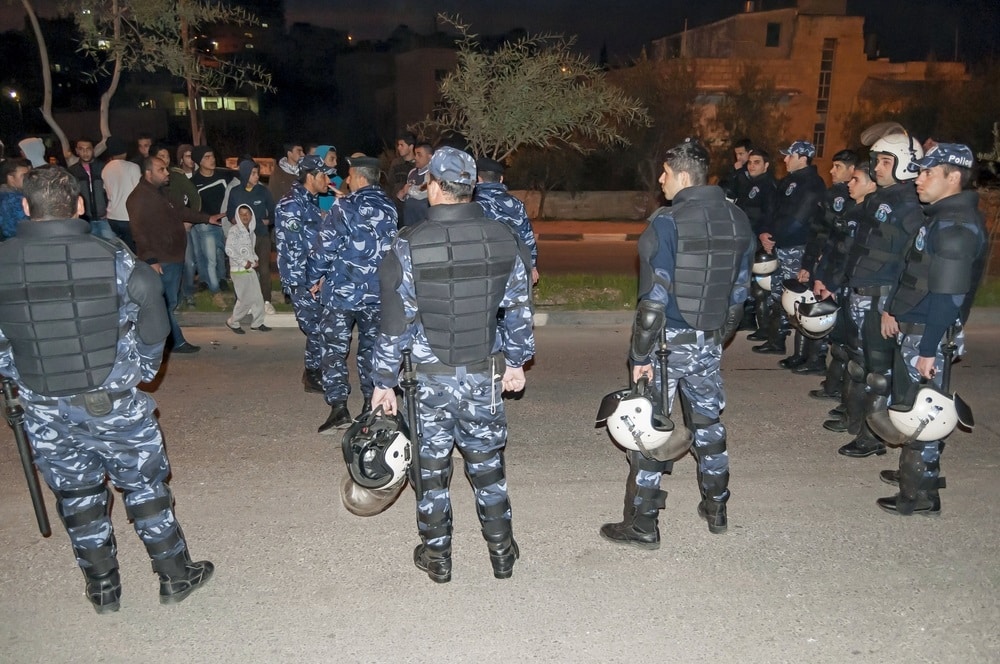
A point in case: one of the two terrorists who carried out the attack in Jenin, in which IDF Major Bar Pelech was killed, was a member of Palestinian military intelligence. The number of PA police officers involved in recent terrorist acts is already approaching 20. One mid-level officer from the security forces shares unknown exclusive information that raises the concern that the PA’s security apparatuses suffer from low morale, and it is doubtful whether they would be able to contain the mounting terrorism in their jurisdiction.
The officer added that there is significant unrest within the security apparatuses, with a growing number of police officers refusing to obey the “security coordination” with Israel, the political arrests, on behalf of the corrupt and disintegrating PA. He spoke of a degenerate PA, whose heads enjoy an abundance of amenities and privileges while the junior police officers barely manage to get 80 percent of their salary. On the other hand, the officer says, the fast-growing terrorist organizations offer a respectable status to their members and perhaps even more appropriate wages… and are considered the heroes of the day on the Palestinian street, as opposed to police officers who are accused of treason.
In Conclusion
As mentioned at the beginning of this series, the PA’s medical chart is a mile long with endless ailments – and the so called “lack of diplomatic horizon” is far from the worst of them. The testimonies presented here by officers from the within the PA security forces, “Battalions” operatives sources close to the “Lion’s Den”, alongside a review of a series of cases in which senior Fatah figures display increasing unease from the disintegration of the institutions to which they belong – even appealing to elements in Jordan and Egypt – and a series of testimonies to Hamas’ stellar ascent in the face of an ebbing Fatah, create a disturbing and compelling picture according to which the PA is rapidly losing altitude both in terms of its legitimacy in the eyes of the Palestinian public and in its security control in key Palestinian cities, such as Jenin and Nablus. Senior Palestinian officials strongly question the PA’s power, status, and chances of survival, and now all that remains is to examine Palestinian politics and the dynamics between Israel and the PA in light of these facts, in order to establish a more realistic assessment of the status of the body, which is considered Israel’s partner in Ramallah.
The PA, which has incited against Israel and encouraged perpetrators of terror attacks from the outset, has adopted an “if you can’t beat them, join them” policy encouraging the Battalions in light of its incompetence to deal with these rebel militants. This policy makes some contribution in easing tensions between it and the challenging factions, and in closing ranks among Palestinians. One this policy’s main expressions is in the decision to halt security coordination with Israel following the IDF counterterrorism raid in Jenin which led to the killing of 9 terrorists. In the PA’s perspective, it is better off escalating tensions with Israel – which is interested in its stability and survival – than confronting terrorist factions that can threaten its integrity. This is a highly problematic development for Israel.
The views expressed in this article are those of the author and do not necessarily represent the views of the movement.

